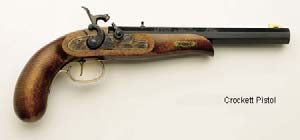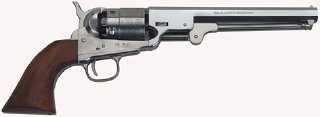Preventing theft from checked baggage
It is widely rumored that theft in checked baggage has skyrocketed now that air travelers can no longer lock bags. While our request to airlines for statistics on this have gone unanswered, we certainly know that on our last trip we were robbed of two knives, a small impact weapon, and a flashlight. While all of these are more or less replaceable (the flashlight was given to us at the SureFire 2006 Anti-Terrorism Symposium, and was so engraved), it is still over $600 that we have had to spend out of pocket, with no clear knowledge of when – or if – the cost of replacement will be taken care of by either TSA or the airline.
After the theft, the question we had to ask ourselves was how we could best avoid being robbed in the future. After much back and forth with TSA and law enforcement, the answer was simple: We needed to lock our bags. How could we do this? Carry a firearm. Bags containing firearms must, according to TSA, be locked. Indeed, if you take a look at the instructions at http://www.tsa.gov/travelers/airtravel/assistant/editorial_1666.shtm, you will read that:
• The firearm must be in a hard-sided container.
• The container must be locked.
In their correspondence with us, TSA said that “if your suitcase also serves as your hard-sided, locked gun case, it may not be left unlocked.” Both operational editors of ÆGIS travel with hard-sided aluminum Zero Halliburton cases (http://www.zerohalliburton.com/ – see the June 2006 issue of ÆGIS). This means that all we will need to do is to toss in a firearm, declare and tag it at the airport, lock it (possibly after TSA inspects the bag), and be on our way.
There is, of course, the minor issue that many states will not allow us to possess a firearm. Our first thought was to get a starter pistol. A starter pistol has the advantage of being considered a firearm, thus requiring being declared and checked in a locked bag. Plus, not being an actual weapon, we thought would generally be legal to possess. As it turns out, it is flat-out illegal to own a starter pistol in this editor’s hometown of New York City.
It also turns out, however, that an antique firearm does not require registration in New York City. Additionally, we have thus far been able to find only one state – New Jersey – in which owning an antique firearm requires a permit. It is, however, still permissible for us to go from a state in which its possession is legal – New York – to Newark airport with the antique gun in our locked bag. In Massachusetts you can have an antique pistol at home without a permit, but there was a court case in which someone was arrested for carrying one.
 We are at present trying to find the case, but suspect it may have been someone carrying a modern-looking percussion revolver, rather than a clearly antique firearm. While you obviously need to check the law in the state from which you are coming and the state to which you are going, we have some confidence that we will not be arrested for having an obviously antique gun such as the Traditions® .32 Cal. Percussion “Davey Crockett” Pistol (http://www.traditionsfirearms.com/eshop/10Expand.asp?ProductCode=P1 2652) shown above – but with no ball or powder or caps – locked in our bag on any trip that we are likely to take.
We are at present trying to find the case, but suspect it may have been someone carrying a modern-looking percussion revolver, rather than a clearly antique firearm. While you obviously need to check the law in the state from which you are coming and the state to which you are going, we have some confidence that we will not be arrested for having an obviously antique gun such as the Traditions® .32 Cal. Percussion “Davey Crockett” Pistol (http://www.traditionsfirearms.com/eshop/10Expand.asp?ProductCode=P1 2652) shown above – but with no ball or powder or caps – locked in our bag on any trip that we are likely to take.
Since it is of current manufacture, why do we say it is an antique pistol? Because most states accept the federal definition in 27 CFR 478.11, which says: Antique firearm. (a) Any firearm (including any firearm with a matchlock, flintlock, percussion cap, or similar type of ignition system) manufactured in or before 1898; and (b) any replica of any firearm described in paragraph (a) of this definition if such replica (1) is not designated or redesignated for using rimfire or conventional centerfire fixed ammunition, or (2) uses rimfire or conventional centerfire fixed ammunition which is no longer manufactured in the United States and which is not readily available in the ordinary channels of commercial trade.
 Note that this definition in theory gives us a wide range of choices. We could, for example, get a percussion firearm such as that shown to the right. In practice, however, we will bet cash money that we are way less likely to ever have problems with our obviously antique gun than with one that looks like a “real” gun. Since our goal is to be able to check a locked bag, going with the obvious antique is the obvious choice.
Note that this definition in theory gives us a wide range of choices. We could, for example, get a percussion firearm such as that shown to the right. In practice, however, we will bet cash money that we are way less likely to ever have problems with our obviously antique gun than with one that looks like a “real” gun. Since our goal is to be able to check a locked bag, going with the obvious antique is the obvious choice.
What would happen if everyone did this? On a guess, the carriers and TSA would find a way to reduce the likelihood of theft from unlocked luggage. Until that happens, we will transport our antique pistol when we travel. Possibly with a rubber parrot and eye patch to complete the ensemble…

